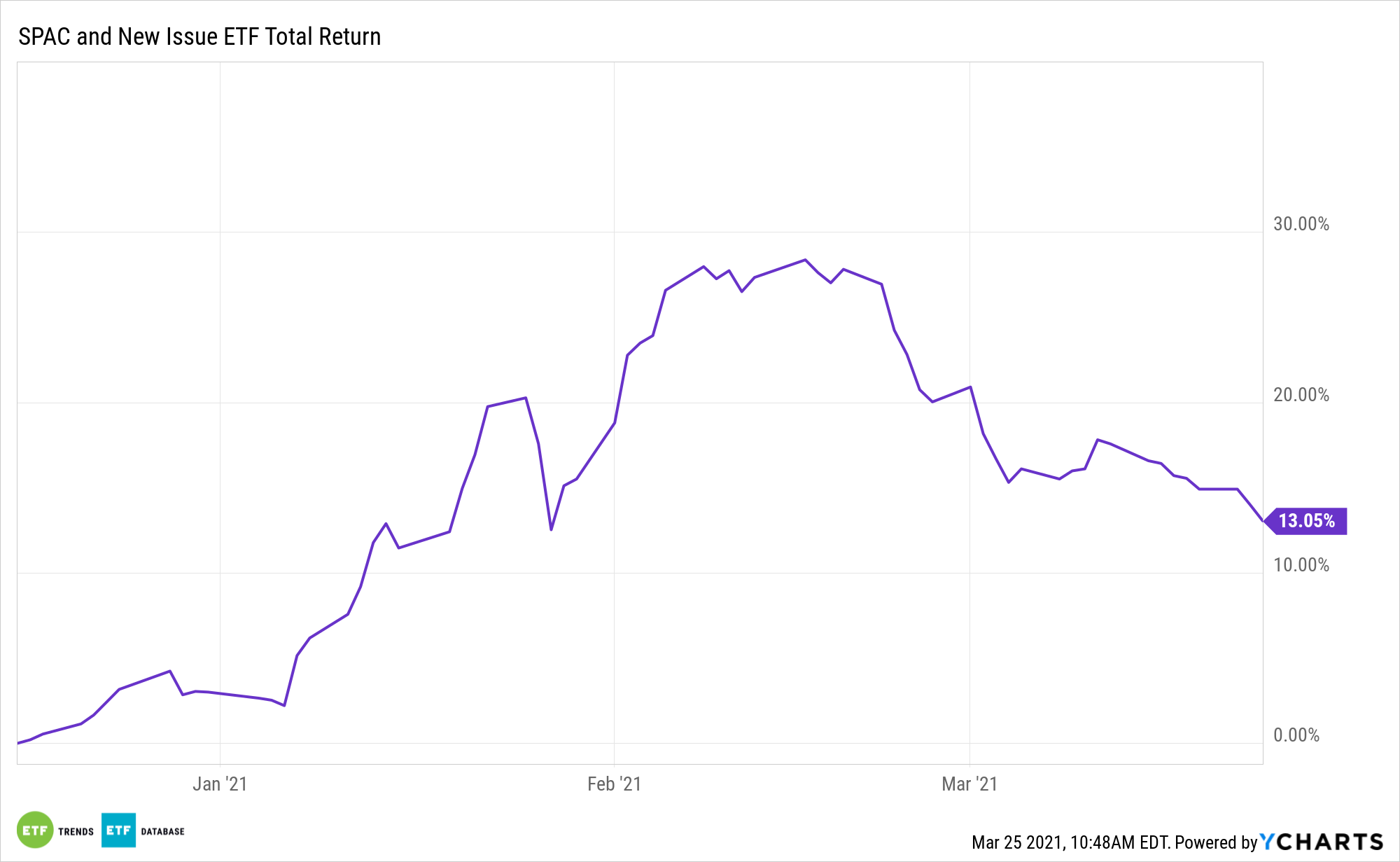SPACs were hot. Things then cooled off, but they may be ramping up again with so many special purpose acquisition companies coming to market.
That scenario could benefit the recently launched SPAC and New Issue ETF (SPCX), one of three dedicated blank-check exchange traded funds on the market today.
According to Tuttle, the most appropriate strategy for managing a portfolio of SPACs is through active management, as it can be more flexible in reacting to shifting market events. This is no place for an index fund based on a rigid set of rules. When looking at investing in a SPAC, focusing on the management team is key.
There remain benefits to the SPAC structure, including institutional access.
“SPACs offer access to investment in acquisitions that are typically otherwise restricted to large institutions through private equity,” notes S&P Dow Jones Indices. “With SPACs, retail investors can invest with the SPAC sponsors who usually have investment and industry expertise. Unlike private equity, investors do not have to pay management fees to SPAC sponsors.”

The SPAC Thesis
SPACs are increasingly attracting high-worth, credible sponsors. As the quality of their founders and the success of their merger companies grow, so does their integrity in the wider investment community.
Picking the winners of individual SPACs can be very difficult. The ETF structure allows investors to access the most liquid SPAC IPOs in a diversified basket. SPCX allows both financial advisors and retail investors to participate in an IPO private equity style of investing. Those are meaningful traits because many post-merger companies struggle after SPAC deals, underscoring the potential benefits of eschewing selection of individual names and embracing the fund’s active approach.
There’s also an element of downside protection.
“The capital raised through an IPO is held in a trust account pending approval of the acquisition, and a redemption option is available for investors. The trust account provides a minimum liquidation value per share, which serves as downside risk protection,” adds S&P Dow Jones.
Overall, SPACs have benefits for investors, but there drawbacks, too.
“When investing in SPACs, investors gain access to private equity-like opportunities with downside protection. However, investors should also be aware that SPACs possess no assets, and sponsors’ interests may not align with those of the investors. In the next blog, we will analyze SPACs’ liquidity and historical performance,” concludes S&P.
For more news, information, and strategy, visit the Active ETF Channel.
The opinions and forecasts expressed herein are solely those of Tom Lydon, and may not actually come to pass. Information on this site should not be used or construed as an offer to sell, a solicitation of an offer to buy, or a recommendation for any product.








